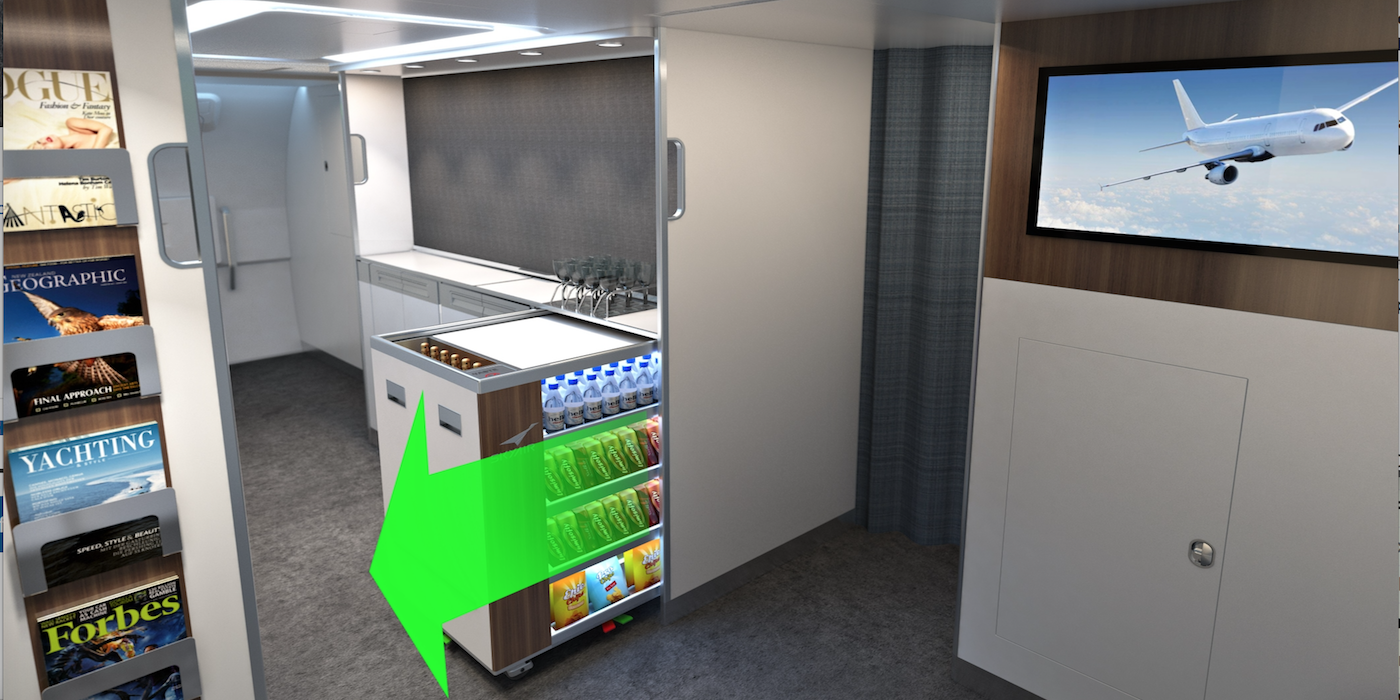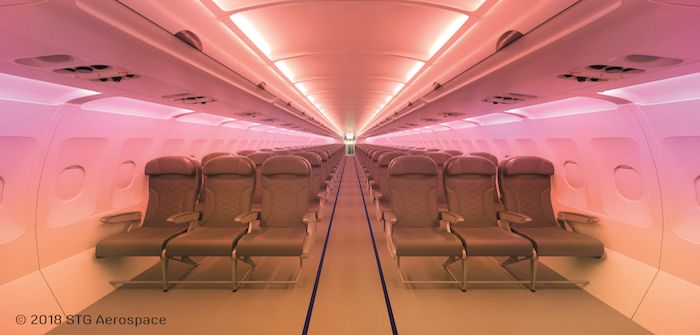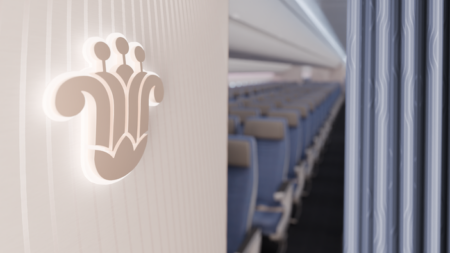Aircraft Interiors Expo is hosting hundreds of innovative ideas for the cabin, spanning lighting, stowage, windows and much more in between. These are just a few of the launches worth finding out more about…
Smart air quality
An air quality system, claimed to be the first working technology of its kind, was launched by FliteTrak. Named SpriteAero, the system – available as line-fit or retrofit – is intended to make air travel safer and more comfortable by monitoring temperature and humidity, while also monitoring the air inside cabins for harmful or dangerous elements such as ammonia, NOx, CO2, methane, TCP and benzene, as well as tobacco, smoke and alcohol. The system transmits data wirelessly from individual rows of seats to crew tablets or onboard systems in real time, sending alerts if danger levels of any elements are detected.
LED retrofit systems for Airbus
STG Aerospace launched the latest version of its liTeMood retrofit LED lighting technology, a plug-and-play, programmable retrofit lighting system for the Airbus A320 and A330. An interesting feature of the Airbus system is that animated scenes can be changed in minutes using an infrared ‘wand’, whether the airline wants to create a sunrise or sunset effect, or a special effect to mark a special occasion or national holiday, for example.

The system can be installed in less than six hours on an A320 and requires no changes to aircraft wiring or control systems, according to STG. The company has secured two launch customers for the system – Small Planet Airlines and XL Airways France – who will upgrade their A320/A321 and A330 fleets later this month.
A metamorphosing mirror
Glass products company AviationGlass & Technology (AGT) has developed a translucent mirror that transforms into a screen at the touch of a centrally controlled capacitive button, enabling communications including advertising and passenger announcements to remain invisible until the airline wishes them to be displayed. Named the AeroGlass Mirror, AGT worked with onboard infotainment specialist Oculus Technologies to design the software content behind this new high-tech mirror. Potential applications include advertising and passenger announcements, displayed when required on integrated screens on bulkheads or mirrors in lavatories.
Multiple reveals at Lufthansa Technik
Lufthansa Technik has been busy revealing several new cabin products in Hamburg, perhaps most notably the Center Ceiling Stowage+ (CCS+) unit, an overhead stowage compartment developed in conjunction with FACC that can be installed in the front, middle or rear of the cabin. CCS+ can withstand a load of up to 38.5kg (85lb), and is intended for the stowage of objects that are needed infrequently during flight, such as newspapers, crew luggage, life rafts, baby cribs or wheelchairs.

Continuing the stowage theme, the company has also designed larger doors for overhead
compartments on Airbus narrowbody aircraft, creating space in one compartment for five roll-on bags instead of three. This is particularly useful for high-density cabins where stowage space is at a premium, and a shortage can create delays during boarding.
Again making the most of cabin space, Lufthansa Technik has collaborated with Diehl Aviation to design a pull-out galley bar module primarily intended for widebody aircraft, which uses existing space in the galley equivalent to that taken by two standard cabin trolleys. Crew need only flick latches to deploy the bar counter, which can also function as a self-service station or duty-free shop.

In another collaboration, this time with EAM Worldwide, Lufthansa Technik has developed single-lane escape slides for A320s configured with the maximum number of seats. These single-lane slides meet the TSO-C69c requirements for rapid cabin evacuation but weigh 80kg (176lb) less than dual-lane escape slides.
Finally, Lufthansa Technik has launched SPAIRS (Service Provider for Aircraft Interior Refurbishment Solutions), a product intended to complement its cabin modification services. SPAIRS gives customers the option of repairing or renewing individual parts or elements of an aircraft cabin, without having to modify the entire cabin. For example, floor or wall panels can be repaired or renewed, lavatories and galleys can be modified, and seat cushions replaced, and any certification work undertaken.
Window innovations
Gentex debuted a curved glass electronically dimmable aircraft window with a large area and contours that match the curvature of the fuselage. The windows have no moving parts: an electronically dimmable panel is installed between the inboard dust cover and outboard structural cabin window, and a window-seat controller allows the passenger to change the amount of visible light entering the cabin. The windows can also can be linked via the onboard network to allow flight crew to control the windows – useful for saving time during TTL.
Vision Systems also revealed electronically dimmable window updates, with an SPD film providing variable shading from fully clear to 99.9% dark, with an instant response time. The design includes noise barriers for improved acoustic insulation.
The company also demonstrated a smart information window that can display content such as travel information, the glass adjusting automatically from clear to dark for contrast and readability.





